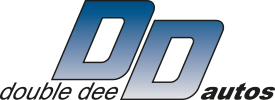If you live in or near London you cannot have missed the news about the new toxicity charge, also known as the T-charge, which came into force on the 23rd of October this year. Part of London Mayor Sadiq Khan’s arsenal of tools to help tackle poor air quality in the capital, it will affect a significant number of vehicles. Here’s a quick guide on what it is, who needs to pay it, and how to do it.
What is the toxicity charge?
Its official name is the Emissions Surcharge, but it is more commonly known as the T-charge or toxicity charge. It applies in addition to the Congestion Charge (or C-charge) and covers the same area of central London. It has been introduced as one of the ways with which to cut dangerously high levels of nitrogen dioxide and particular matter which are released into the atmosphere when fossil fuels such as petrol and diesel are burned. Both nitrogen dioxide and particulate matter have adverse effects on health and can be particularly harmful for those with pre-existing conditions such as heart problems or asthma.
Who needs to pay it?
All vehicles that do not comply with the minimum Euro emission standards. For petrol and diesel vehicles, this is Euro 4/IV while for motorised tricycles and quadricyles it is Euro 3. If you are unsure which category your vehicle falls under check your V5C vehicle registration document which will tell you. Typically, if your vehicle was first registered before 2006 then it is likely to not meet those requirements, although there are some exceptions. You can check your vehicle here to be sure you don’t miss a payment and end up with a penalty charge.
The T-charge applies on Mondays through to Fridays from 7am to 6pm and covers the same area as the Congestion Charge Zone.
How to pay
The charge is £10 for each day that you drive within the T-charge zone. However, if you live within the congestion zone, you can apply for an exemption or discount – check the Transport for London website for full details of all available discounts and charges. You can pay online through the same website as well.
Retrofitting and upgrades
It is possible for an older vehicle to be retrofitted in order to meet the necessary requirements and avoid paying the T-charge. Alternatively, it may be time to upgrade your vehicle which in the long run could be a saving if you regularly drive into the Congestion and Toxicity Charge Zone. Other options to avoid paying the charge include using public transport or joining a car club – particularly useful if you only drive into the zone from time to time and don’t want to make any large investments into a new vehicle or retrofitting your existing one.
For advice and help on the T-charge, retrofitting your vehicle, or keeping on top of servicing and maintenance talk to us at Double Dee Autos team. Give us a call on 020 8460 3040 and ask to talk to one of our specialists.

